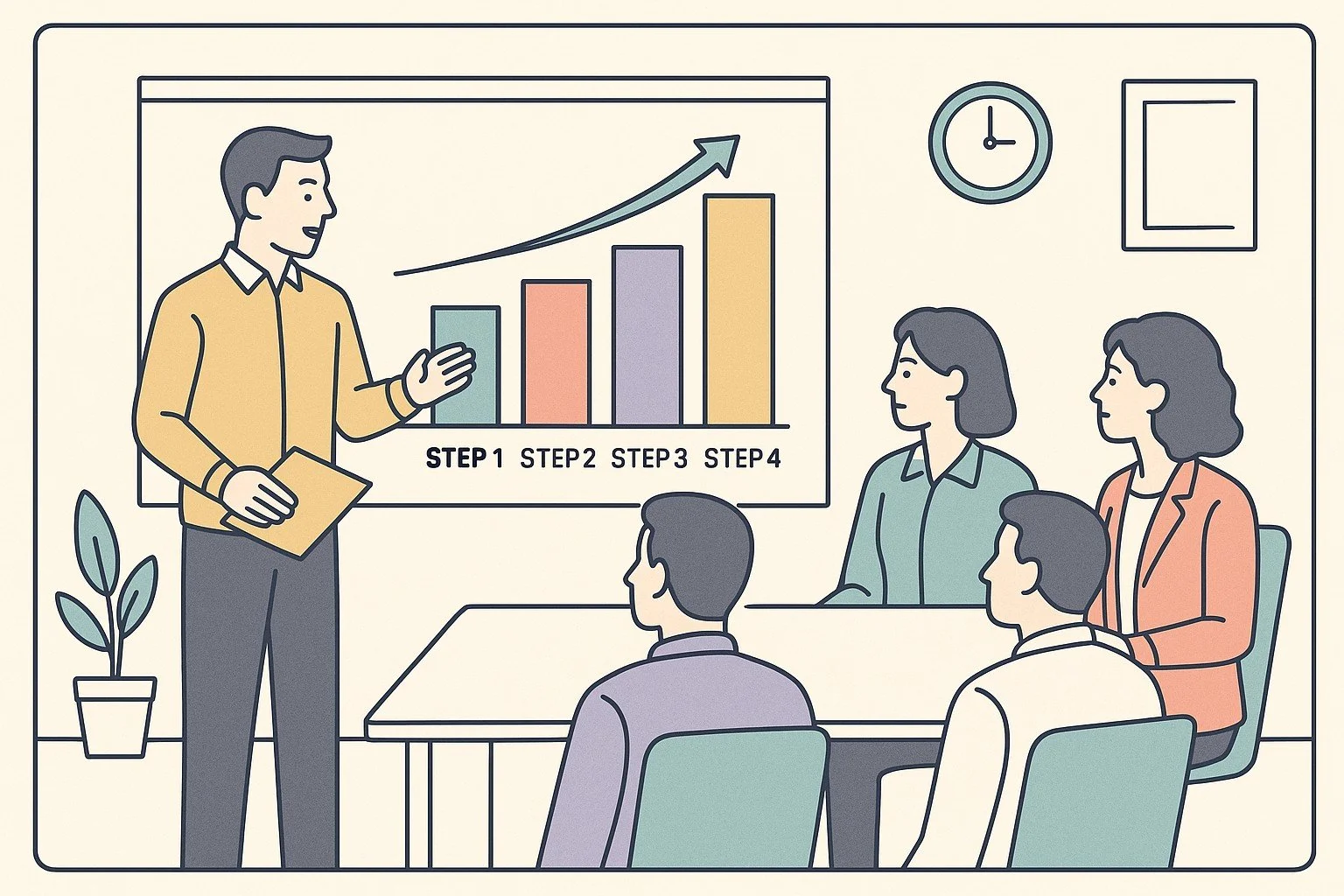The First 90 Days: Turning Onboarding into a Retention Strategy
For many companies, employee onboarding is a one-day event. It consists of a laptop, a welcome basket, a mountain of paperwork, and a series of introductory meetings. While well-intentioned, this administrative checklist represents a massive missed opportunity.
The real goal of onboarding is not just to get a new hire set up for their first day. It is to strategically integrate them into the fabric of your organization and accelerate their journey to becoming a confident, high-performing, and long-term contributor.
An effective employee onboarding process is one of the most powerful levers you have for improving engagement and retention. Getting it right is an investment that pays dividends for years. This article provides a strategic 90-day framework to transform your onboarding from a one-day chore into a motivation engine.
The Three Phases of Strategic Onboarding
Think of onboarding not as a day, but as a crucial 90-day journey. Each phase has a distinct goal for setting your new team member up for success.
Phase 1: The First 30 Days – Orientation & Connection
Goal: To build a foundation of clarity, confidence, and belonging. The focus is on making the new hire feel welcomed, supported, and psychologically safe.
Provide a Structured First Week Plan: Don't leave their first few days to chance. Provide a clear schedule with a mix of training, introductory meetings, and quiet time to digest information.
Assign an "Onboarding Buddy": Pair them with a friendly peer (not their direct manager) who can answer informal, "silly" questions about company culture, acronyms, and processes.
Deliver an Early Win: Assign a small, well-defined "starter project" that they can complete successfully within the first couple of weeks. This builds confidence and demonstrates immediate value.
Focus Manager Check-ins on Settling In: The manager's daily check-ins should be less about tasks and more about support, asking questions like, "How are you feeling?" and "What questions do you have that you haven't had a chance to ask yet?"
Phase 2: Days 31-60 – Integration & Contribution
Goal: To deepen their understanding of the business and facilitate their first meaningful contributions to the team.
Encourage Cross-Functional Learning: Schedule brief meetings with key people from other departments. This helps the new hire understand how their role fits into the larger organizational puzzle.
Offer the First Piece of Developmental Feedback: After they've completed a few tasks, provide thoughtful, constructive feedback. This establishes a norm of continuous improvement and shows you are invested in their growth.
Involve Them in a Key Team Project: Move them from solo "starter projects" to a collaborative team effort. Ensure their voice is heard in meetings to show their perspective is valued.
Conduct a Formal 60-Day Check-in: Review progress against initial goals and discuss any challenges or roadblocks they are facing. This is a more formal conversation than the daily check-ins.
Phase 3: Days 61-90 – Acceleration & Future-Planning
Goal: To solidify their role within the team, build their autonomy, and begin looking toward their long-term future at the company.
Assign Their First Significant Project: Give them full ownership of a meaningful project. This demonstrates trust and allows them to fully showcase their skills.
Conduct a "Reverse Feedback" Session: The new hire has a unique "fresh eyes" perspective. Ask them for their observations on team processes, communication, or culture. What could be improved? This makes them feel like a valued partner.
Begin the Career Development Conversation: Start a discussion about their long-term career aspirations. How can you, as their manager, help them get there? This plants the seeds for future growth and is a key part of your employee retention strategy.
Tracking the Real Impact of Your Onboarding Process
This 90-day plan provides a world-class structure. But how do you know if it’s truly working? How do you know if your new hire is genuinely integrating or just politely smiling while feeling isolated, confused, or overwhelmed?
Observation alone can be deceiving. This is where objective data provides the insight that a manager's gut feeling cannot.
The onboarding period is a critical diagnostic moment. A holistic check-in at the 90-day mark can provide powerful, objective data on key indicators of successful integration:
Well-being & Stress: Is the reality of the role creating unexpected levels of stress or negatively impacting their work-life balance?
Manager Support: Does the new hire feel genuinely supported, understood, and coached by their direct manager?
Role Clarity & Connection: Do they feel connected to the team and crystal clear on what success looks like in their role?
Quintaum’s diagnostic platform is designed to capture these insights. This data allows you to proactively identify and address integration challenges long before they become reasons for a talented new hire to leave within their first year.
The First 90 Days Define the Next 900
Stop treating onboarding as an administrative checklist. Start treating it as the first, most critical phase of your retention strategy. By providing a structured, supportive, and insightful experience, you set the trajectory for a long and successful career at your organization.
Learn how Quintaum's insights can help you build and validate a world-class onboarding experience.



